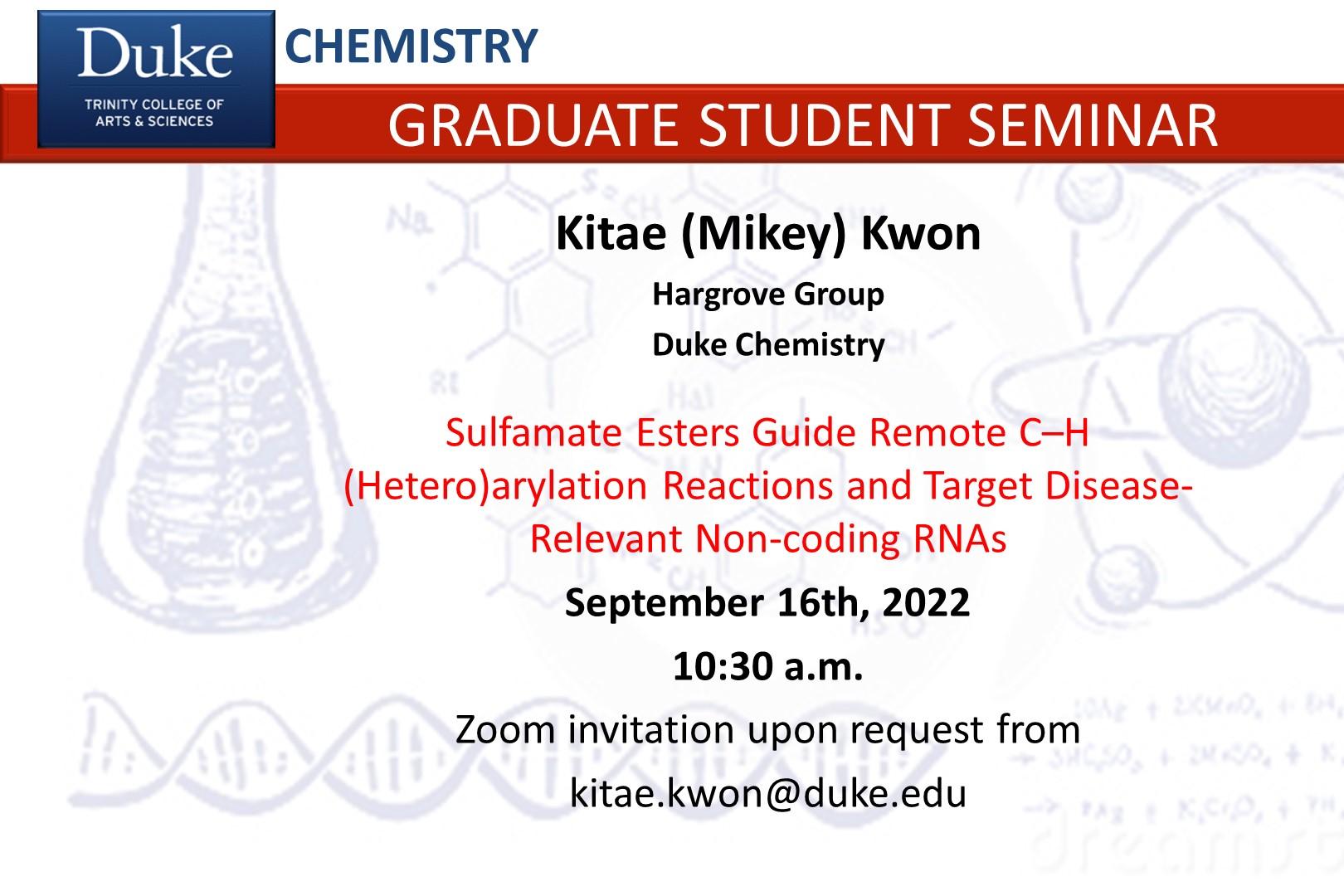
Kitae (Mikey) Kwon, Ph.D. Candidate
Amanda Hargrove, Ph.D., Advisor
Abstract: Alcohols are ubiquitous motifs in the constellation of organic molecules. Given their prevalence in the world around us, new synthetic methods for forging new bonds on alcohols and preparing biologically active alcohol derivatives provide toolkits to solve challenging problems in organic chemistry. First, new bond-forming reactions with alcohols streamline access to complex alcoholic scaffolds commonly found in natural products and pharmaceuticals. Second, commercial and synthetic availabilities of alcohols offer rapid entry to new chemical space or expansion of pre-existing chemical space for biologically active molecules. My dissertation meets these motivations by masking alcohols as sulfamate esters, which are useful traceless linkers for C-H functionalizations and heteroatom-rich bioactive molecules.
The first part of my dissertation describes photochemically mediated, nickel-catalyzed -C(sp3)-H (hetero)arylation reaction between sulfamate esters and (hetero)aryl bromides to affect traditionally challenging net C(sp2)-C(sp3) cross-coupling reactions. Hitherto, there were no general methods that convert -C(sp3)-H bonds of aliphatic alcohols into -C(sp3)-C(sp2) bonds under mild photochemical conditions. Fortunately, this transformation was realized by photochemically generating nitrogen-centered free radical intermediate and introducing nickel catalyst to orchestrate radical relay/C(sp2)-C(sp3) cross-coupling cascade reaction. The second part of my dissertation applies sulfamate esters in the arenas of medicinal chemistry and biochemistry. Herein, these heteroatom-enriched masked alcohols were surveyed as a novel class of small molecule ligands for targeting disease-relevant non-coding RNAs. Informed by machine learning and rational molecular design, I developed a new generation of sulfamate esters that should herald a new chemical space for RNA therapeutics.